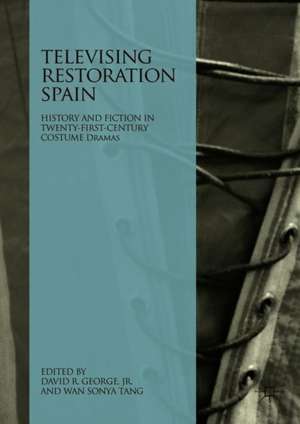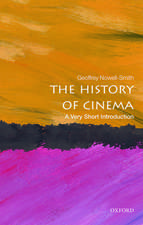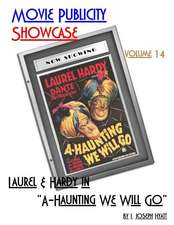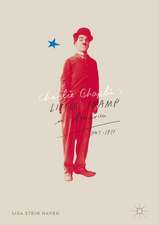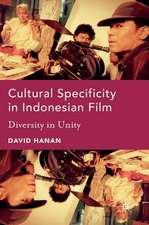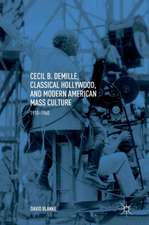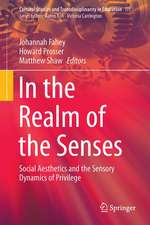Televising Restoration Spain: History and Fiction in Twenty-First-Century Costume Dramas
Editat de Jr. David R. George, Wan Sonya Tangen Limba Engleză Hardback – 27 sep 2018
| Toate formatele și edițiile | Preț | Express |
|---|---|---|
| Paperback (1) | 524.88 lei 6-8 săpt. | |
| Springer International Publishing – 3 ian 2019 | 524.88 lei 6-8 săpt. | |
| Hardback (1) | 704.04 lei 6-8 săpt. | |
| Springer International Publishing – 27 sep 2018 | 704.04 lei 6-8 săpt. |
Preț: 704.04 lei
Preț vechi: 828.27 lei
-15% Nou
Puncte Express: 1056
Preț estimativ în valută:
134.73€ • 146.30$ • 113.18£
134.73€ • 146.30$ • 113.18£
Carte tipărită la comandă
Livrare economică 22 aprilie-06 mai
Preluare comenzi: 021 569.72.76
Specificații
ISBN-13: 9783319961958
ISBN-10: 3319961950
Pagini: 256
Ilustrații: XV, 269 p. 10 illus. in color.
Dimensiuni: 148 x 210 mm
Greutate: 0.62 kg
Ediția:1st ed. 2018
Editura: Springer International Publishing
Colecția Palgrave Macmillan
Locul publicării:Cham, Switzerland
ISBN-10: 3319961950
Pagini: 256
Ilustrații: XV, 269 p. 10 illus. in color.
Dimensiuni: 148 x 210 mm
Greutate: 0.62 kg
Ediția:1st ed. 2018
Editura: Springer International Publishing
Colecția Palgrave Macmillan
Locul publicării:Cham, Switzerland
Cuprins
1. Introduction (David R. George, Jr. and Wan Sonya Tang).- Part I. Producing Heritage.- 2. Fortunata’s Long Shadow: the Restoration as Televisual Heritage in Acacias 38 and El secreto de Puente Viejo (David R. George, Jr.).- 3. Profane Unions: Constructing Heritage from Anarchist-Bourgeois Romances in Ull per ull and Barcelona, ciutat neutral (Elena Cueto Asín).- Part II. Imagining Technologies.- 4. New Technologies and Transmedia Storytelling in Víctor Ros: Captivating Audiences at the Turn of the Century (Mónica Barrientos-Bueno and Ángeles Martínez-García).- 5. From Photography to Forensics: Technology, Modernity, and the Internationalization of Spanish History in Gran Hotel (Wan Sonya Tang).- Part III. Constructing Genders.- 6. Dresses, Cassocks, and Coats: Costuming Restoration Gender Fantasies in La Señora (2008-2010) (Nicholas Wolters).- 7. “Las normas son para romperlas”: Emilia Pardo Bazán, Carmen de Burgos, and the Unruly Women ofSeis hermanas (Linda M. Willem).- Part IV. Restoring the Telenovela.- 8. Bandolera: Limits and Possibilities of Period Telenovelas (Francisca López).- 9. Creating Locally for a Global Audience: Seis hermanas and the Costume Serial Drama as Quality Television (Concepción Cascajosa Virino).- Part V. Sensing the Ending.- 10. Commercializing Nostalgia and Constructing Memory in As leis de Celavella (María Gil Poisa).- 11. “Felices años veinte”? Las chicas del cable and the Iconicity of 1920s Madrid (Leslie J. Harkema).- 12. The End of the Restoration: A Vision from the Early Second Republic in 14 de abril. La República (Iván Gómez García).
Recenzii
“This edited volume seeks to fill a gap that still exists in the research on television costume drama. ... The edited volume expands the scope of inquiry within the costume drama genre, which is almost exclusively exemplified by British film productions and therefore involves a broader English-speaking readership in the dialogue about the Restoration and Spanish television series.” (Tatiana Astafeva, Historical Journal of Film, Radio and Television, Vol. 40 (4), 2020)
Notă biografică
David R. George, Jr. is Senior Lecturer in Spanish at Bates College, USA, focusing on nineteenth and twentieth-century Spanish literature, film, and television. He is co-editor of Historias de la pequeña pantalla. Representaciones históricas en la televisión de la España democrática (2009), and author of annotated editions of texts by Leopoldo Alas and Benito Pérez Galdós.
Wan Sonya Tang is Assistant Professor of Hispanic Studies at Boston College, USA. Her research focuses on Spain’s modernization process in the late nineteenth and early twentieth centuries, and the cultural anxieties generated therein, particularly with regards to gender and class dynamics.
Wan Sonya Tang is Assistant Professor of Hispanic Studies at Boston College, USA. Her research focuses on Spain’s modernization process in the late nineteenth and early twentieth centuries, and the cultural anxieties generated therein, particularly with regards to gender and class dynamics.
Caracteristici
Offers the first examination of a notable recent trend in Spanish programming Adds to the field of global media studies by bringing Spanish examples into new and existing critical discussions, opening the way for future comparative studies Reinvigorates Nineteenth-century Spanish literary and cultural studies by bringing the field into dialogue with contemporary theory on television, film, media, and visual culture
